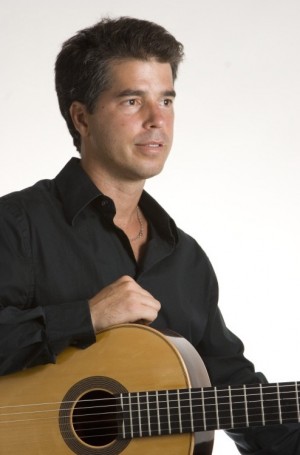Guitarist Celino Romero provides mixed rewards at Coral Gables recital
In the realm of the classical guitar, the Romeros are the instrument’s first family and among its most prominent standard bearers. Playing as a quartet (and sometimes quintet), the group’s members often also take the solo spotlight.
A full house greeted Celino Romero, the youngest adult member of the clan, at his recital Thursday night for the Community Arts Program Summer Concert Series at Coral Gables Congregational Church.
Relaxed and highly personable, Romero bantered amiably with the audience. He indicated that more guitar playing Romeros are on the way to keep the family tradition alive as he is teaching the instrument to both of his children.
He certainly shares his relatives’ immaculate technique and seeming ability to tackle the most difficult pieces as if they were child’s play. Admirably, he played without amplification, his sound more than ample in the sanctuary’s mellow acoustics.
Still, one felt Celino Romero was more comfortable as an ensemble and chamber player than as a soloist. In the program’s second half, a surprise guest appearance by his cousin Lito found Romero playing with greater subtlety.
The eight movement Suite Española by Gaspar Sanz immediately demonstrated Romero’s strengths and weaknesses. Straddling the 17th and 18th centuries, Sanz’s music is a delightful brew of memorable tunes and buoyant dance rhythms.
In his technically polished performance, Romero was most persuasive in the classical formality of the “Pavanne,” sketching its melody with an almost improvisatory sense of a jazz player. The “Canarios” was adapted by Joaquin Rodrigo in his Fantasia para un Gentilhombre and Celino Romero played the movement at a snappier clip than his uncle Pepe did at his recital in the same venue last summer. In the “Gallarda” and “La Minoa de Cataluña” sections, however, he tended to merely skim the surface, playing in a superficial manner.
There was a similar lack of depth and soulfulness in the haunting melodic lines of Francisco Tárrega’s Capricho Árabe. Sebastian Iradier’s chestnut La Paloma was barely recognizable, again suggesting free-form jazz may be Romero’s solo meteor. His grandfather Celedonio’s mix of Spanish dance rhythms and contemporary harmonies in Suite Andaluza played to Celino’s dexterity as he strummed and played at the extreme low end of the soundboard for “Zapateado” and imitated a mandolin in the “Tango.” Yet even these vignettes were treated once over lightly.
After intermission, he was joined on stage by Lito Romero, son of Angel Romero. Playing with one of his family and regular collaborators, Celino seemed like a different guitarist, with playing that proved more centered and nuanced.
The first movement of Vivaldi’s Concerto in D Major was crisply articulated, with Lito’s vital guitar translation of the continuo underpinning. The duo dusted off the cobwebs from Granados’ Spanish Dance No. 5 (Andaluza), the tonal shading exquisite and sudden variations of tempo well judged.
A softly spun Spanish Dance No. 2 (Oriental) found Lito bringing clarity to the ornaments beneath Celino’s singing melody. Thunder from a summer storm punctuated a leisurely perusal of Albeniz’s Granada.
Celedonio Romero’s Malagueña concluded the program in lively fashion, Lito tapping the sides of the guitar and even playing the melody only on the fingerboard.
Posted in Uncategorized
Leave a Comment
Fri Jul 18, 2014
at 11:35 am
No Comments





